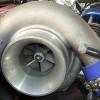Is This Real, Or A Chop?
Announcements
-
Similar Content
-
Latest Posts
-
By TurboTapin · Posted
Let large companies that are making money off selling kits do the preliminary engineering for you. If they all do -10, then that is all you'll ever need. -
Hopefully it ends up being something manageable, like a hone, rather than a full bore—it would be a huge relief if it’s not as bad as it looks. Hang in there; these setbacks are annoying, but it sounds like you’re handling it as smartly as possible.
-
At the end of the day, it’s all about understanding the odds and being comfortable with the potential cost, whether it’s horsepower on a build or chips on a roulette table. And I have to say, the Laine example made me laugh—some people really do embrace that carefree, “roll and see” attitude!
-
Thanks MBS206, i got that PDF but got abit overhelm with all the connections and tracing of wires. I wasn't expecting to plug the dash harness anywhere. i was just going to use my electronics jumper wires to plug into the right pins like ECU power, ecu ground, ignition trigger etc... I do have a few ratchet straps locking it down tight. Fire extinguisher ready and only a small amount of fuel at a time, enough to submerge the pump.
-
Thanks GTSBoy, i will do abit more digging. I am missing a blue relay near the ECU connector... so i will chase that up in the next few days as well
-




Recommended Posts
Create an account or sign in to comment
You need to be a member in order to leave a comment
Create an account
Sign up for a new account in our community. It's easy!
Register a new accountSign in
Already have an account? Sign in here.
Sign In Now